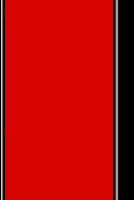
 |
|||||
 |
|||||
| Bairro Alto's town planning Bairro Alto demonstrates a new idea of city, with esthetical presuppositions, with regularity and functionality. It is certainly a set of constituted norms, in D. Manuel's kingdom, that give Bairro Alto his unity and coherency, premising architectonic and urban values continuity till today. As an XVI century's urban phenomenon, Bairro Alto isn't, naturally, the unique example. Its particular meaning, come from its great extension capacity, premised by the big properties, that soon transform it in the greatest house-property operation of the XVI century in Lisbon. Architectonic
aspects: The memory of Portas de Santa Catarina is, till today, expressed in the two churches' Old Square, by the way that the two buildings (Encarnação and Loreto churches) are implanted. By the same way, Rua do Alecrim and Rua da Misericórdia are the continuations of the wall's exterior roads. Largo de Camões, just totally urbanized in the XIX century, after the old buildings' destruction, is a recent square, but the link to Calçada do Combro reveals the old rural way survival. The architectonical typologies diversity is very striking and, in spite of the chronological framing be essentially posterior to the XVI century, there are urban memories and constructed testimonies from the anterior époques. A great part of those that are habitation buildings today, had formerly other functions from those they had been dismissed. We are talking about traditional and erudite models and different époque typologies. Some of them are important cottages that belong to the nobility and the bourgeoisie in their ascension, in the Pombalino period and during the liberalism. The architectonic composition and some rich and noble decorative details, like the portals marked the differences. The type-plans and the constructive models had remitted themselves to the mannerist heritage to which had been progressively linked new baroque and classicist expression components. But Bairro Alto wasn't palaces only. There had been successively constructed some traditional vernacular expression habitations, most simple in the occidental area with rural neighborhood and most elaborated in the urban insertion zones, which give expression to this popular and aristocrat area of the city decorated with wrought iron gratings, geometrical pattern decorative glazed tiles and some design detail windows, aspects that give an ambiguity and establish the equilibrium between the unity and the diversity. Decorative details and also the introduction of chromatic elements are some of the Lisbon traditional architecture characteristics, which are expressed in this area with the greatest refinement.
The effects of the earthquake Bairro Alto's interior didn't suffer transformations beyond the desegregation of the big buildings, like the palaces from the XVI and XVII centuries. Some public spaces were reorganized, with the urban sculpture collocation. An example of that is Camões statue, in the square with the same name (in 1867), and the statue dedicated to Eça de Queiroz (in 1903), in front of Quintela Palace . The sophisticated restaurants (Tavares - 1874), the poplar restaurants (Alfaia - 1880) and too much typical restaurants had appeared. These restaurants were frequented not just by the local population but mainly by journalists and typographers linked to the periodic press that had installed themselves at the local. Some unique characteristics: Studios: The story of the cinema in Portugal is linked to this zone of Lisbon, too. Rua do Loreto and Largo de Camões were some of the reception spaces to the 7th art. Salão "Ideal", one of the most popular spectacle halls in the town, opens its gates to the public, at Loreto (in 1904), by the initiative of the industrial Julio Costa, proprietor of the "Ideal" film enterprise. In sequence to this tradition, the cinema "Chiado Terrasse" had been inaugurated in Rua António Maria Cardoso designated to an aristocrat public. Newspapers: This had been one of the most important characteristics and activities of Bairro Alto, which contributed strongly for its traditional nocturne animation. Actually, "A Bola", a sports newspaper, is the unique newspaper in this zone, beyond some little typographic nucleus.
|
|||||
 |
|||||
 |
|||||
 |
|||||
 |
|||||
 |
|||||
 |
|||||
 |
|||||
 |
|||||
| inLisboa.com
| Rua da Atalaia nº 153 R/C 1200-039 Lisboa | Tel/Fax : (+351)
21 343 9 11 | info@inLisboa.com |
|||||